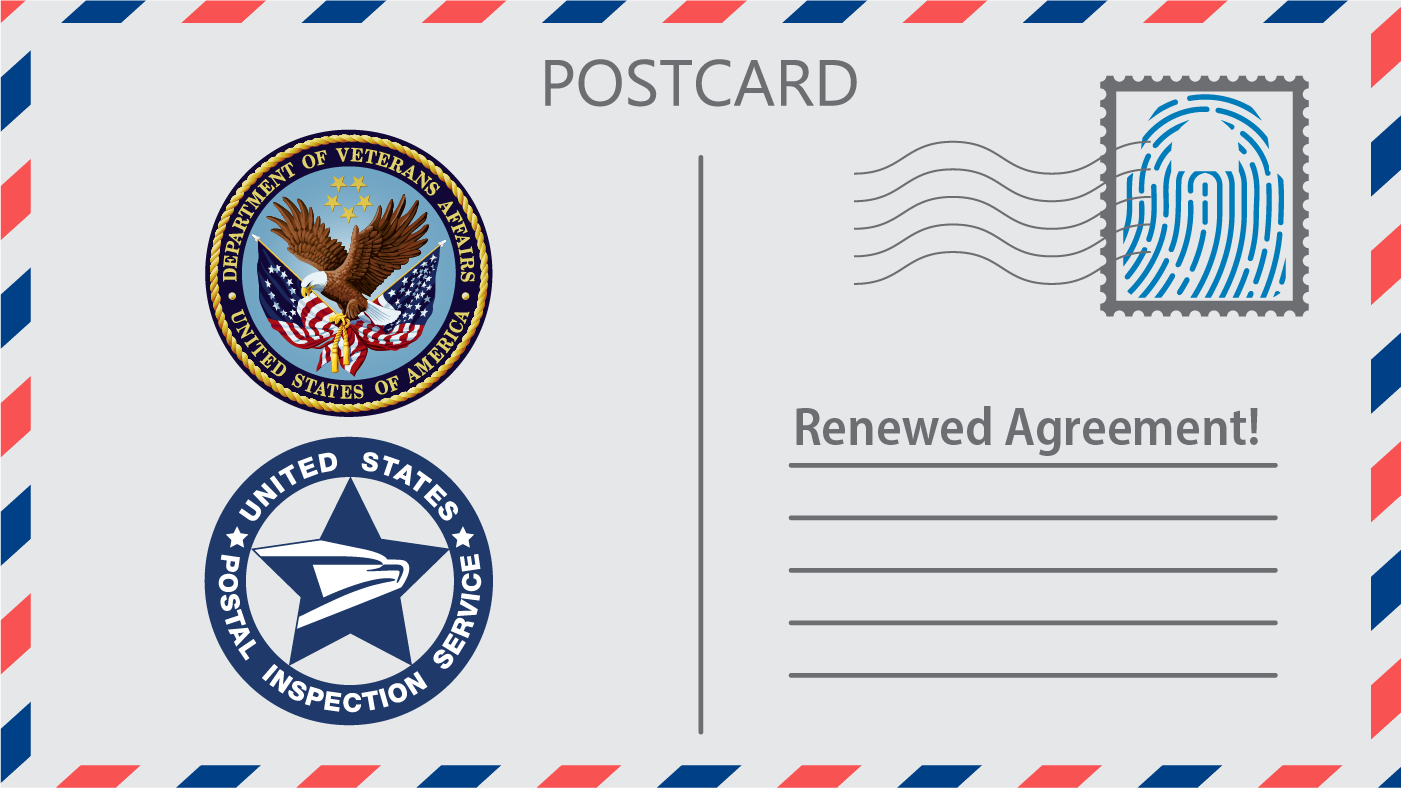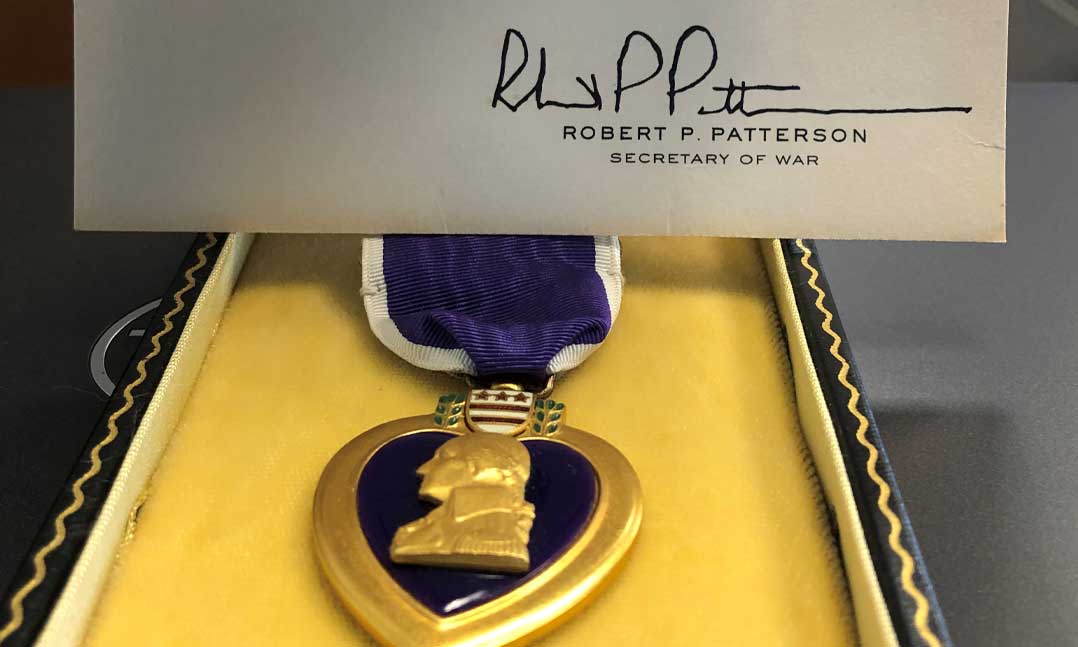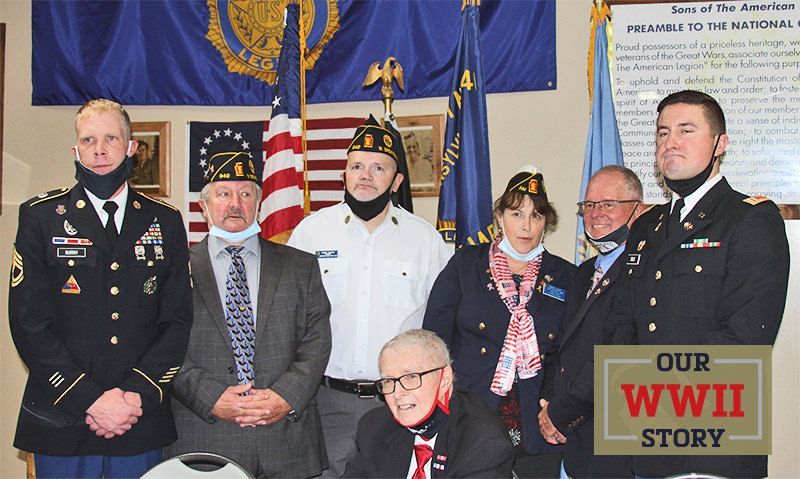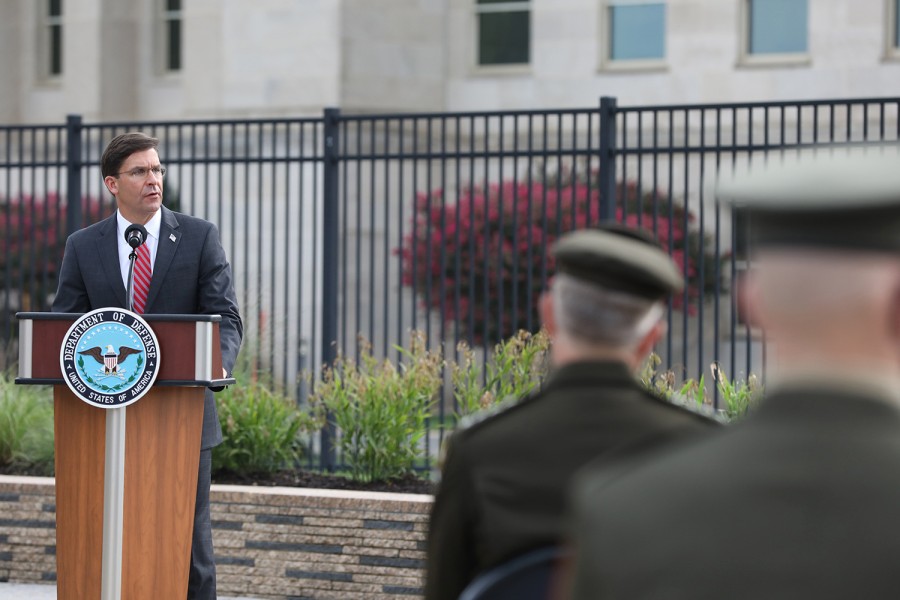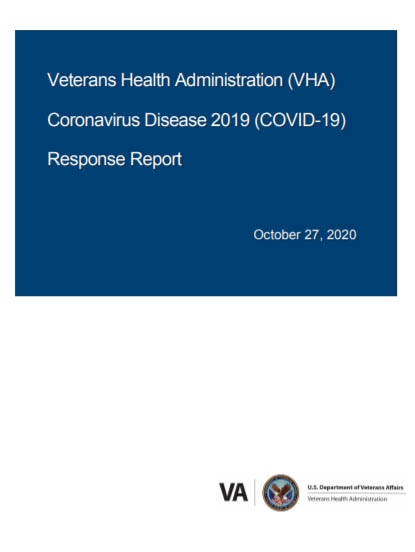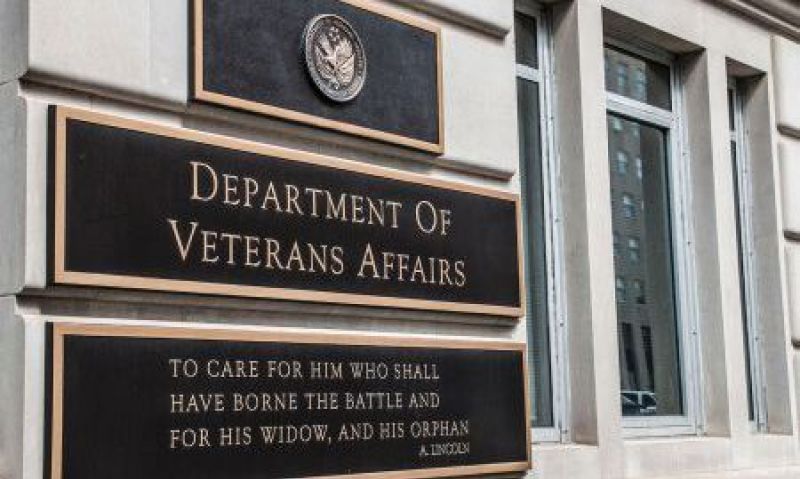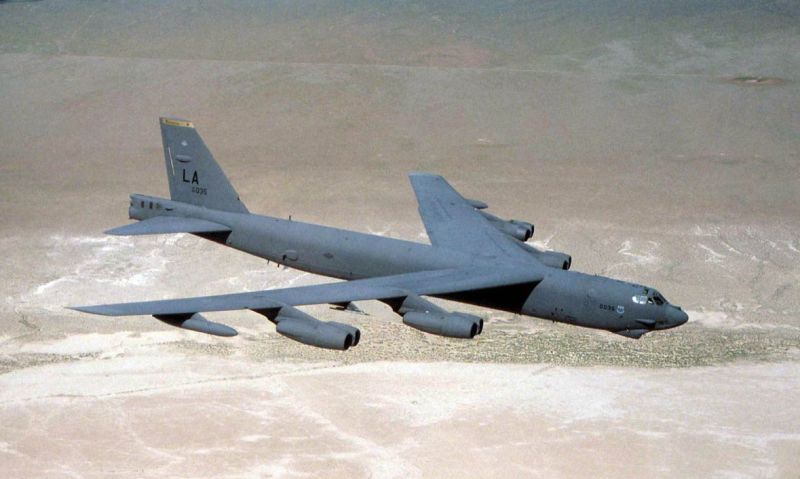News
WASHINGTON – The U.S. Department of Veterans Affairs (VA) today announced a preliminary plan for distributing COVID-19 vaccinations it will implement once the Food and Drug Administration issues an emergency use authorization for a vaccine.
VA has worked in close coordination with the Centers and Disease Control and Prevention (CDC) and Operation Warp Speed to plan for COVID-19 vaccination of VA staff and Veterans.
VA will first provide vaccinations to front-line VA health care workers and Veterans residing in long-term care units in 37 of its medical centers across the country.
The centers, listed below, were chosen for their ability to vaccinate large numbers of people and store the vaccines at extremely cold temperatures.
Health care workers will be among the first to receive vaccinations because they are at high risk for contracting and spreading COVID-19 to other staff members and patients, and their health is critical to ensuring the continued care of Veterans.
Veterans in VA’s long-term care facilities will be the first patient group to be vaccinated. As vaccine supplies increase, additional Veterans will receive vaccinations based on factors such as age, existing health problems and other considerations that increase the risk of severe illness or death from COVID-19.
VA anticipates a limited vaccine supply immediately after FDA’s approval, but expects more supplies to be available in short order.
“VA is well prepared and positioned to begin COVID-19 vaccinations,” said VA Secretary Robert Wilkie. “Our ultimate goal is to offer it to all Veterans and employees who want to be vaccinated.”
The 37 VA sites chosen for initial distribution of the vaccine will closely monitor patients and staff for side effects and log this information in its vaccine monitoring and tracking system. This is the same system VA uses to monitor reactions to all vaccines, including those for the flu and shingles.
VA will report directly to the CDC data on all vaccine doses administered by VA. The department will also provide general, public updates on the number of people who receive the vaccination at these sites, similar to how VA posts COVID-19 testing figures.
The 37 VA sites are spread throughout the country and include:
Birmingham (AL) VA Health Care System
Phoenix (AZ) VA Health Care System
West Los Angeles (CA) VA Health Care System
Palo Alto (CA) VA Health Care System
Eastern Colorado (CO) VA Health Care System
Connecticut (West Haven Campus) VA Health Care System
Washington DC VA Health Care System
Orlando (FL) VA Health Care System
Augusta (GA) VA Health Care System
Edward J. Hines Jr. VA Hospital (IL)
Lexington (KY) VA Health Care System
Southeast Louisiana (New Orleans) VA Health Care System
Maryland (Baltimore) VA Health Care System
Bedford (MA) VA Health Care System
Ann Arbor (MI) VA Health Care System
Minneapolis (MN) VA Health Care System
Harry S Truman Memorial Veterans Hospital (Columbia MO)
St. Louis (MO) VA Health Care System
Omaha (NE) VA Health Care System
Southern Nevada (North Las Vegas) VA Health Care System
Raymond G. Murphy (NM) VA Health Care System
New York Harbor (Brooklyn) VA Health Care System
Western New York (Buffalo) VA Health Care System
Durham (NC) VA Health Care System
Cleveland (OH) VA Health Care System
Oklahoma City (OK) VA Health Care System
Portland (OR) VA Health Care System
Corporal Michael J. Crescenz VA Medical Center (Philadelphia PA)
Pittsburgh (PA) VA Health Care System
Caribbean (Puerto Rico) VA Health Care System
Memphis (TN) VA Health Care System
Dallas (TX) VA Medical Center
Michael E. DeBakey VA Health Care System (Houston TX)
Audie L. Murphy VA Hospital (San Antonio TX)
Richmond (VA) VA Health Care System
Puget Sound (WA) VA Health Care System
Milwaukee (WI) VA Health Care System
Veterans seeking additional information should visit the VA Coronavirus Vaccine FAQs webpage, contact their care team, or visit their facility website.
(VAntage Point)
VA’s Privacy Service and the United States Postal Inspection Service – the law enforcement and crime prevention arm of the Postal Service – recently established a two-year agreement continuing their partnership to provide Veterans and their dependents important information on avoiding scams and protecting their personal information.
This partnership supports the postal inspection service’s national anti-fraud campaign, “Operation Protect Veterans. This initiative alerts Veterans about scams targeting them and their families. It also supports VA’s More Than a Number campaign, an identity protection program that provides information to educate Veterans and their beneficiaries on protecting themselves from identity theft.
Scams targeting Veterans range from the subtle to the audacious and may include:
Benefits buyout offers: Scammers take advantage of Veterans’ needs by offering a quick, upfront buyout of future disability or pension payments at a fraction of the value.
VA phishing scamming: Posing as VA employees, fraudsters call Veterans to “phish” for Social Security numbers and personal financial information, which they use to access bank accounts or open fake credit card accounts.
Bogus employment offers: When posting fake job descriptions to collect personal information from Veterans’ job applications, scammers often also charge an employment fee.
Fake charitable-giving requests: Often using plausible branding techniques, scammers make fraudulent claims about collecting charitable donations that do not actually benefit Veterans or wounded service members.
Fraudulent records promotions: Scammers try to charge Veterans fees to access military records or government forms – information that is available for free through the National Archives (for military records) and VA.gov for local VA offices (for forms).
With their continued partnership, VA Privacy Service and USPIS share a common goal: educating Veterans and their families on simple precautions they can take to protect their identity. Whether it’s mail fraud, bank fraud, or some other type of scheme, both the United States Postal Inspection Service and VA want to help Veterans and their dependents avoid becoming victims.
(VAntage Point) Community leaders across southern New England met virtually to form stronger relationships to prevent Veteran suicides in their region and to discuss outreach strategies for Veterans who are struggling.
Embracing VA’s #BeThere campaign, VA New England Healthcare System recently hosted an online conference called “#BeThere for Service Members, Veterans and Families: Strengthening Our Communities.”
Among the more than 250 attendees were librarians, gun shop owners, educators, social workers, medical professionals, directors of Veteran services and leaders of the faith-based community.
VA speakers reminded the group that you do not have to be a mental health professional to save a life and that suicide prevention is a total team effort.
“We know that VA can’t do this alone,” said Ryan Lilly, VA New England Healthcare System director, in remarks to open the conference. “It’s really going to take every entity, every individual, and every organization that interacts with Veterans on a routine basis to help us get there.”
Suicide prevention important with today’s stress
This year, participants noted that today’s restrictions have added stress to Veterans already feeling the weight of readjustment to civilian life from deployments and economic challenges.
An important part of preventing suicide – particularly during a pandemic – is reaching out.
While the public often focuses on the number of younger Veterans who commit suicide, participants reviewed statistics that show the suicide rate for elderly Veterans is higher than that of non-Veterans of the same age.
Presenters discussed strategies for how communities can connect with Veterans using technology and to find creative ways to reach out and provide support. There are things every person can do every day, like calling a friend or checking in with a neighbor.
Such simple practices are particularly strong preventive factors for suicide during the pandemic because they help people feel less alone, said several speakers.
Fears associated with the coronavirus have intensified PTSD, overall anxiety and depression as well as suicidal thoughts for many Veterans. Many Veterans also feel that they should be able to solve a crisis in their life on their own and therefore are often reluctant to seek help.
Medal of Honor Veteran: We all have a role
“We all have a role in getting people to understand that they don’t have to solve this on their own,” said Ryan Pitts, a former Army soldier from Lowell, Mass., the ninth living recipient of the Medal of Honor from the war in Afghanistan. Pitts said the community can make a difference in reaching out so that Veterans never feel alone.
David W. Schafer, VA New England director of Mental Health, stopped the conference and waited until each participant added the number to the Veterans Crisis Line as a contact on their smartphones.
The number is 1-800-273-8255. Veterans in crisis or those who are concerned can then press 1 to reach help.
Since most Veteran suicides occur among Veterans who have not used VA health care or VA mental health, community partnerships are critically important in reaching Veterans who may not be receiving care from VA. The Veterans Health Administration’s Office of Community Engagement has focused its attention on creating such partnerships.
Building stronger community partnerships
A positive outcome from the conference is building stronger relationships among such partners in New England. Of the 17 Veterans who each day take their own life, 11 have not accessed VA health care.
Another strategy VA New England is using is “postvention,” which builds upon prevention efforts by providing support to those impacted by suicide loss.
Training for VA New England clinicians was scheduled the day before the community conference to discuss resources and support for anyone touched by suicide.
“We’re the touch points for many Veterans who are struggling,” said Schafer. He also noted the importance of each VA clinician using the “strengthening the tool kit” and in finding ways to heal and deal with the personal and professional impacts of suicide loss.
To learn more about VA’s community partnerships to prevent Veteran suicides or to inquire about starting a partnership, visit www.va.gov/healthpartnerships.
The package arrived at the VFW Regional Benefits Office in Phoenix, Ariz., on Aug. 18. It was a bulky package with no return name or address, only a letter explaining what to do with a smaller box inside.
The longhand letter began with — “This was found in my deceased mother-in-law’s estate from her second marriage. Appreciate if you can find relatives of this brave young man and return it to them” — and concluded with a thank you from “Liz.”
Stacey Boren, who received the package that day, read the letter and proceeded to open the smaller box.
Thanks to the efforts of Stacy Boren, the Purple Heart of 1st Lt. John L. Carmody was returned to the family. Boren, who works at the VFW office inside the VA Regional Office in Phoenix, received the Purple Heart along with a request to get it to the rightful heirs. After much research, Boren was put in touch with Carmody’s niece, who now has the medal.
What Boren found inside was a pristine Purple Heart medal engraved with the name of 1st Lt. John L. Carmody, along with a Presidential Memorial Certificate signed by Harry S. Truman on behalf of Carmody.
“When I opened it and saw the presentation case and then the Purple Heart, I got goose-bumps,” said Boren, an administrative assistant at the VFW Regional Benefits Office. “After reading the note that accompanied it, it became our mission to get it back to the rightful owners.”
The medal was addressed to an Edna M. Carmody by the War Department, and it came accompanied with an enclosed note from Robert P. Patterson, the Secretary of War between September 1945 and July 1947.
“The search for 1st Lt. Carmody’s relatives began that very afternoon,” Boren said. “And within a couple of hours, we had found obituaries for 1st Lt. Carmody and his sister, Joan Hirth, on findagrave.com.”
Boren used findagrave.com to message the grave managers, passing along contact information in order to reach surviving family members of 1st Lt. Carmody.
“When I didn’t hear anything towards the end of the day, I started searching for relatives that were listed in Joan Hirth’s obituary,” Boren said. “While discussing my frustration with my boss, Ken Deist, he suggested I call the cemetery where both brother and sister are buried.”
Boren’s search led her to Mount Carmel Catholic Cemetery in Hillside, Ill., where 1st Lt. Carmody and his sister, Joan, were buried. She contacted a representative over the phone and was asked to fax a letter explaining the situation.
“He told me he would forward the contact request to the family,” Boren said. “So again, I waited. For the next 15 days, I constantly checked our voicemail and email for any communication from one of the family members.”
On the early morning hours of Sept. 10, Boren finally received a call from a Marybeth Kelly, who introduced herself as 1st Lt. Carmody’s niece.
“She informed me that she would be thrilled to care for her uncle’s medal. She stated her mother, Joan, would have loved to have had it,” Boren said. “I was just relieved that such a special award was going to a loving home.”
(The American Legion)
World War II Army veteran Frank T. Edwards served his country with valor in the European theater, earning several commendations including the Silver Star.
Edwards earned the Silver Star for his actions on April 4, 1945, near Erlach, Germany. After the war, he returned home and led a productive life as a civilian, including earning his doctorate and becoming a professor at California University in Pennsylvania.
But he only received one of the medals he earned through his valor.
On Veterans Day 2020, that changed thanks to an effort by The American Legion.
“Sgt. Edwards had not been recognized nor received all of his medals,” said Michele Deems, commander of the 25th District in the Department of Pennsylvania. “His good friend, Leonard Siegel, another World War II veteran and Cal professor started inquiring about a ceremony for his 94-year-old friend.”
Siegel contacted West Brownsville (Pa.) American Legion Post 940, which led Commander Terry Sanders to reach out to Deems. She contacted state representatives and eventually Congressman Guy Reschenthaler, a Navy veteran.
That led to Edwards finally receiving the Silver Star, Bronze Star, WW II Victory Medal and another half-dozen medals during a Veterans Day ceremony at American Legion Post 940.
“We can never thank you enough Sgt. Edwards, you are a true inspiration to us all,” Sanders told Edwards, who quietly thanked everyone and rendered a snappy salute.
(VAntage Point)
Planning is underway at VA to deliver a COVID-19 vaccine when one becomes available. VA is working with the Centers for Disease Control and Prevention (CDC) to develop a phased plan based on five core ethical pillars: safety, maximizing the benefit of the vaccine, equity, fairness and transparency.
Veteran and employee safety remain our #1 priority. The plan takes into consideration a number of risk factors, including risks of acquiring infection, severe illness and death if infected, and transmitting the disease, as well as the risk to essential workers, including health care personnel.
VA medical centers across the country performed planning exercises in late October to prepare for initial receipt of the vaccine.
Offering the vaccine first to health care personnel and Veterans
Initially, we expect supplies to be limited. Based on these risk factors, VA will offer the vaccine first to high-risk health care personnel (HCP), as they are essential in continuing to care for patients throughout the pandemic. As more vaccines become available, VA will offer the vaccine to high-risk Veterans. VA’s ultimate goal is to offer it to all Veterans and employees who want to be vaccinated.
Preparing VA facilities
VA medical centers across the country performed planning exercises in late October to prepare for initial receipt of the vaccine. These exercises help sites determine how they will distribute immunizations. They based the decisions on the number of doses available and coordinated communications with Veterans to schedule their immunization.
They also addressed ordering, storage, handling, and administration of the vaccine.
Listening to Veterans
Additionally, VA has been conducting listening sessions and interviews with Veterans across the country to gauge their interest and determine the best methods for reaching out to our diverse Veteran population.
Your local medical facility will update you as vaccines become available.
(Stars and Stripes)
By LOLITA C. BALDOR | Associated Press | Published: November 11, 2020
WASHINGTON — A day after President Donald Trump fired Defense Secretary Mark Esper, three staunch loyalists to the president were named to top defense jobs. Among them was a former Fox News commentator who failed to get through Senate confirmation because of offensive remarks he made, including about Islam.
The abrupt changes sent reverberations through the Pentagon as nervous civilian and military personnel waited for the next shoe to drop. And they fueled worries of a wider effort to drum out anyone considered not loyal enough to Trump.
The unease was palpable inside the building throughout the day over concerns about what the Trump administration may do in the months before President-elect Joe Biden takes office and whether there will be a greater effort to politicize the historically apolitical military. While radical policy shifts seem unlikely before the Jan. 20 inauguration, the changes could further damage prospects for a smooth transition already hampered by Trump's refusal to concede his election loss.
James Anderson, who had been acting undersecretary for policy, resigned Tuesday morning and he was quickly replaced by Anthony Tata, a retired Army one-star general. A short time later, Joseph Kernan, a retired Navy vice admiral, stepped down as undersecretary for intelligence, hastening what had been an already planned post-election departure. Kernan was replaced by Ezra Cohen-Watnick, who becomes acting undersecretary for intelligence.
The departures came on Christopher Miller's second day on the job as defense chief. Miller also brought in his own chief of staff, Kash Patel, to replace Jen Stewart, who had worked in that job for Esper. Patel and Cohen-Watnick are both considered staunchly loyal to Trump and previously worked at the National Security Council.
Patel was among the small group of aides who traveled with Trump extensively during the final stretch of the campaign. He also is a former prosecutor in the national security division of the Department of Justice and former staff member on the House Intelligence Committee. In that post, he was a top aide to Rep. Devin Nunes, R-Calif., leading the investigation into Russian interference in the 2016 election.
Patel was linked in media accounts to efforts to discredit the investigation into ties between the Trump campaign and Russia. He moved to the National Security Council in February 2019, and earlier this year, he traveled to Syria for rare high-level talks aimed at securing the release of two Americans who have been missing for years, including journalist Austin Tice.
Cohen-Watnick was a protégé of Trump’s initial national security adviser, Michael Flynn, but was replaced in the summer of 2017 by Flynn’s successor, H.R. McMaster, as part of a string of shakeups at the White House and National Security Council.
While the personnel changes added to the tumult in the wake of Esper's departure, it's not clear how much impact they could have on the massive Pentagon bureaucracy. The department is anchored by the tenet of civilian control of the military, and much of the day-to-day activities are conducted by career policy experts and military leaders in the U.S. and around the globe who adhere to a strict chain of command.
Also, many of Trump's policies and defense priorities have already been put in motion by Esper and his predecessors, guided by the Joint Chiefs of Staff, including the chairman, Army Gen. Mark Milley. All of those military leaders remain in place.
This is Trump's second attempt to secure the policy job for Tata. Earlier this year, Trump appointed Tata to the post, but the Senate canceled a hearing on the nomination when it became clear that it would be difficult if not impossible to get him confirmed. Tata withdrew his name from consideration for the job, which is the third-highest position in the department. Trump then appointed Tata to serve in the job of deputy undersecretary.
There has been continuing tumult in the Pentagon's policy shop. John Rood was forced to resign as undersecretary for policy in February after he drew White House ire for warning against the U.S. withholding aid to Ukraine, the issue that led to the president’s impeachment.
Tata will be “performing the duties of” the undersecretary job, rather than holding the “acting” title. Officials who carry the “acting” title have more authority than those who are “performing the duties of” the job.
According to reports, Tata posted tweets in 2018 calling Islam the “most oppressive violent religion I know of,” and he called former President Barack Obama a “terrorist leader” and referred to him as Muslim. The tweets were later taken down.
At the time of the Senate hearing, Rep. Adam Smith, D-Wash. and chairman of the House Armed Services Committee, said Trump must not prioritize loyalty over competence and install someone in a job if the “appointee cannot gain the support of the Senate, as is clearly the case with Tata.”
Defense officials said Miller, who previously was director of the National Counterterrorism Center, continues meeting with staff and becoming familiar with the Pentagon and its wide range of complex and critical national security issues and mission.
Anderson's departure was first reported by Politico.
Associated Press writers Eric Tucker, Jill Colvin and Ben Fox contributed to this report.
WASHINGTON — The U.S. Department of Veterans Affairs today announced publication of its Coronavirus Disease 2019 (COVID-19) Response Report detailing its efforts to address the pandemic from early January through June 30.
The report results are a continuation of VA’s pledge to share best practices and lessons learned with other government agencies and the private health care system while the country fights COVID-19.
“As the nation’s largest integrated health care system, VA’s COVID-19 response has been robust and far-reaching. This includes 24 current and 75 completed Fourth Mission assignments involving more than 2,000 VA employees helping to support non-Veteran patients and non-VA health care systems,” said VA Secretary Robert Wilkie. “This report reflects VA’s agility throughout the pandemic to adapt based on lessons learned in order to continue providing safe, quality health care to Veterans as we continue to battle the pandemic.”
The COVID-19 Response Report provides an extensive look at VA’s complex COVID-19 response, including the department’s planning and preparation ahead of the pandemic; the initial crisis response; key COVID-19 policies and directives; interactions and interdependencies with federal and state agencies; and adaptations to health care operations. It provides a forthright view of challenges and issues that VA needed to address in order to effectively respond to the pandemic, such as exchanging supplies, Personal Protective Equipment and deploying health care personnel across the enterprise to meet critical needs in certain areas.
The department implemented a wide range of actions to ensure the safety of its patients and employees while never closing its doors. As of November 6, VA has tested 879,457 Veterans and employees for COVID-19 and diagnosed 67,905 Veterans with COVID-19, 14,168 of whom were admitted to a VA medical center for care. VA has hired more than 59,095 new employees since March 29 in response to the surge in demand for care during the pandemic. In addition, VA moved many appointments to telehealth meetings to keep Veterans and employees safe and has seen a 1,525% increase in home or offsite telehealth visits.
As of June 29, VA participated in more than 90 and led 28 multiple-site COVID-19 research studies. Notably, VA participated in research on 3D-printed respirator masks and convalescent plasma to treat COVID-19 patients, as well as other promising therapeutics, and laid the groundwork for participation in COVID-19 vaccine clinical trials.
The report was compiled through more than 90 interviews with health care leaders and stakeholders as well as a variety of documents and data pertaining to the Veterans Integrated Service Networks and health care enterprise. It cites conclusions, findings and recommendations across several categories, including recognition of the threat and planning; national and interagency coordination; emergency management and readiness; data and analytics; capacity, supply chain and testing; clinical operations; research; and moving forward.
VA expects to develop further reports to document the evolution of VA’s response to the pandemic and consider additional strategic follow-up actions informed by the ongoing experience.
A synopsis of VA’s COVID-19 Response Report and the full report are available on the VA website. VA also released its COVID-19 Response Plan in March and its Charting the Course Plan for how VA facilities would resume services temporarily halted by the crisis in May.
By Nikki Wentling/Stars and Stripes
The Department of Veterans Affairs is eliminating its in-house compensation and pension exam program and will outsource all of the exams, which are crucial to determining whether veterans are eligible for VA benefits.
In a letter to VA Secretary Robert Wilkie on Tuesday, Rep. Elaine Luria, D-Va., said the plan was developed with no notice to Congress. She’s concerned the move could slow work to reduce a backlog of compensation and pension exams, commonly referred to as C&P exams, and she’s worried about the VA’s ability to oversee the contractors. Luria also criticized the department for cutting federal jobs during a pandemic.
“For many veterans, thorough and accurate C&P examinations are crucial to securing service-connected benefits,” Luria wrote. “VA’s quiet decision to carry out a major reorganization of its C&P program without a plan to make key improvements, reduce backlog, or retain employees is unlikely to deliver the high-quality results we expect.”
Luria leads the Subcommittee on Disability Assistance and Memorial Affairs, part of the House Committee on Veterans’ Affairs. During a hearing she led last year, the VA said it would contract with more outside medical providers to perform C&P exams. Lawmakers were led to believe the contracted examiners merely supplemented the existing program, primarily to help rural veterans and those veterans facing long wait times, Luria said.
Recently, however, VA staff told Luria’s office about the department’s plan to shutter the C&P program at the VA and contract with the private sector for 100% of the exams.
“VA privately advised my staff of the decision after it was made, without a press release or communication to the affected veterans, advocates, or labor representatives,” Luria said. “Such a consequential decision should have been communicated directly to the chair and ranking member of this subcommittee and should not have moved forward during the turbulence of the pandemic.”
The VA did not immediately respond to a request for comment.
The change comes as the VA is working through a backlog of requests for exams. The department suspended the exams in April, as coronavirus cases grew across the United States. During that time, the backlog grew to about 350,000 requests.
The VA resumed in-person exams in some locations May 28. As of mid-October, exams were being scheduled in all areas of the U.S. In all the new instructions about the resumed exams, the VA notes that a “VA contract medical examiner” would be in touch to schedule them.
During a C&P exam, a health care provider examines a veteran to help determine whether his or her disabilities are connected to military service. The information gathered during the exam is used by the VA to make a decision on a veteran’s claim and to issue a disability rating. The rating determines how much monthly compensation the veteran is due.
The VA has increasingly relied on contractors to perform the exams – spending nearly $6.8 billion on exam contracts in 2016. Recently, contractors were performing about 60% of exams, Luria’s letter states.
The Government Accountability Office reported in 2018 that the department doesn’t track whether contractors are meeting quality and timeliness standards. The VA has not yet implemented the recommendations the GAO made in that report, Luria said. She’s worried that as the VA expands its use of contractors, the department lacks the ability to oversee them.
“More than two years later, [the VA] has not fully implemented these recommendations it agreed were necessary for proper oversight,” Luria wrote to Wilkie. The “failure to implement these recommendations raises concerns about its ability to oversee contractors as they increase their workload from 60% of C&P examinations to nearly 100%.”
Luria sent a list of questions to Wilkie, including how many C&P examiner jobs the VA would eliminate and whether those employees would be able to remain at the agency in some capacity.
Luria also wants to know whether the VA has considered maintaining in-house exams for veterans suffering from Gulf War Illness, military sexual trauma and traumatic brain injury – all conditions unique to veterans and that often call for specialists. She asked for responses by Nov. 16.
(VFW Magazine)
By Alan W. Dowd
A trio of B-1B bombers recently screamed over the East Siberian Sea, just beyond Russian territory. That followed on the heels of six B-52s rumbling across the airspace of all 30 NATO members.
Dubbed “Allied Sky,” the single-day exercise served to demonstrated “the United States’ powerful commitment to NATO,” according to NATO Secretary General Jens Stoltenberg. “Allied Sky” followed the deployment of three B-2s to Diego Garcia. The arrival of B-2s in Diego Garcia, in turn, followed the deployment of B-1Bs to Guam for training exercises with the Japanese air force and USS Ronald Reagan carrier strike group. The intended audiences in Russia and China certainly got the message.
Equally certain: those audiences know that the youngest B-52 came off the assembly line in 1962, that America only has 20 B-2s, that the B-1B’s flight hours have been severely limited, and that America’s entire bomber fleet numbers just 158 planes.
Dwindling down. As Air Force Magazine reports, 62 B-1Bs (developed in the late 1970s/early 1980s), 76 B-52s (developed in the 1950s) and 20 B-2s (developed in the 1980s) comprise America’s 158-plane bomber fleet (down from 411 bombers in 1990). The United States plans to field even fewer bombers next year (140), as the Air Force tries to shift resources into the B-21 Long Range Strike Bomber, which will not achieve initial operational capability until 2025.
Those dwindling numbers and aging airframes wouldn’t be a concern if our enemies were beating their swords into plowshares. But with China on the rise, Russia on the march, the Middle East on fire, and our allies in Europe and the Pacific on edge, we know the very opposite to be true. In this environment, 158 bombers – let alone 140 -- aren’t nearly enough to deter our enemies and defend our interests.
We sometimes forget that America’s aging and shrinking bomber fleet has been at war for more than 20 years – without a break. B-1Bs participated in Operation Desert Fox in Iraq (1998), Operation Allied Force in Serbia and Kosovo (1999), Operation Enduring Freedom/Operation Freedom’s Sentinel (2001-present) in Afghanistan, Operation Iraqi Freedom/Operation New Dawn (2003-2011), Operation Odyssey Dawn in Libya (2011) and Operation Inherent Resolve in Iraq/Syria (2014-present). B-1Bs also deployed to support the strike that eliminated ISIS leader Bakr al-Baghdadi in Syria (2019). B-2s contributed to Allied Force, Enduring Freedom, Iraqi Freedom, Odyssey Dawn and follow-on strikes against ISIS targets in Libya in 2017 that were technically in support of Inherent Resolve.
B-52s, which have been flying combat missions since Vietnam, took part in Desert Fox, Allied Force, Enduring Freedom, Iraqi Freedom and Inherent Resolve. B-52s also spearheaded Operation Desert Strike, which targeted Iraqi communications and command facilities (1996).
America’s bombers conduct a huge share of the Air Force’s kinetic strikes. “During Desert Storm, B-52s delivered 40 percent of all the weapons dropped by coalition forces,” according to the Air Force. During Allied Force, six B-1Bs delivered “more than 20 percent of the total ordnance while flying less than 2 percent of the combat sorties,” the Air Force adds. RAND notes that the bomber force delivered 11,000 out of the more than 23,000 U.S. air-to-ground munitions dropped during Allied Force. In Allied Force, B-2s were “responsible for destroying 33 percent of all Serbian targets in the first eight weeks” of the operation, according to an Air Force analysis. In Afghanistan, U.S. bombers accounted for 80 percent of the munitions dropped during the first two weeks of the operation, according to Mel Deaile, a professor at the Air Command and Staff College and a former B-2 pilot.
Moreover, 46 nuclear-capable B-52s and B-2s are always on call as part of America’s nuclear-deterrent force. Nor can we forget that bombers are constantly deployed to conduct strategic-signaling operations, like those described in the introduction of this piece -- flights over the South China Sea, Arctic Circle, Taiwan Strait, South Korea, Australia and Ukraine; deployments to Guam and Alaska and Britain; visits to Diego Garcia and Qatar and Saudi Arabia.
Building up. Add it all up, and America’s Air Force needs more bombers and newer bombers – soon. That explains why Air Force leaders are upping the projected bomber fleet to “just north” of 220 airframes, as Gen. Timothy Ray, commander of Air Force Global Strike Command, explained in an interview with National Defense magazine. To reach the 220-mark, the Air Force plans to procure 100 B-21s, while updating and retrofitting some of the existing fleet of B-1Bs and B-52s.
The B-1Bs may end up carrying hypersonic weapons, according to the report. The plan is to retire the B2 (America’s sole radar-evading stealth bomber) in the 2030s.
That means between now and 2025, when the B-21 comes online, just 12 percent of America’s bomber fleet will be able to penetrate and survive a near-peer enemy’s air defenses. Yet another cause for concern: only six B-1Bs were rated mission capable in late 2019.
As the Air Force Almanac puts it, “today’s bombers are better” than their predecessors, but “so are adversaries’ air defenses. This is a security risk.”
Indeed, China is building a dense, multilayered defensive bubble around its territory. The approaches to the PRC bristle with sensors and surface-to-air missiles (SAMs), and this kill zone is growing as the PRC emplaces SAMs and other anti-aircraft systems on its illegal islands in the South China Sea. Plus, the PRC is fielding an increasingly high-tech, power-projecting air force. The PRC deploys 2,800 combat aircraft, including 150 bombers. Beijing’s bomber fleet includes the H-6N (an upgraded derivative of a Russian bomber) and the soon-to-be-unveiled H-20 (a long-range stealth bomber similar to the B-2).
Russia fields 125 bombers, with as many as another 40 on order, according to World Air Forces 2020. More worrisome, Russia has deployed its extended-range S400 air-defense system to Kaliningrad, Syria and likely Libya. And Russia’s S300 air-defense system has been deployed in Venezuela. These strategically positioned anti-air systems give Russia the ability to hold at risk aircraft flying through vast swaths of the eastern and southern Mediterranean, the Caribbean, and NATO airspace in Poland, the Baltics and the Baltic Sea.
Mushrooming challenges. How and why did this happen?
First, as the Lexington Institute explains, “When the Cold War ended, the Defense Department terminated production of the B-2 and ceased development of new bombers for the first time since the 1920s.” The consequence of this bomber-building holiday is a U.S. bomber fleet that’s too small and too old.
Second, since Sept. 11, 2001, America’s military has largely focused on dismantling terrorist networks and clearing the spawning grounds of terrorism – and understandably so. However, this expended finite resources that otherwise would have been allocated toward new weapons systems designed to deter peer threats like China and Russia.
Third, China and Russia have not been standing still. Instead, they have been investing resources into fielding 21st-century militaries. China has increased military spending by 126 percent the past decade -- and a staggering 572 percent since 1999. Russia has upped military spending by 176 percent since 2000.
By way of comparison, U.S. defense spending has grown 54 percent since 2000. U.S. defense spending actually fell by 16 percent between 2011 and 2016, although it has ticked up the past four years.
To deter Russia and China in what increasingly feels like Cold War 2.0, the United States needs to build more bombers and upgrade its existing bombers – and that means more defense spending. Given America’s mushrooming debt, that won’t be easy. Today’s defense budget is 3.1 percent of GDP, half what it was for much of Cold War 1.0.


